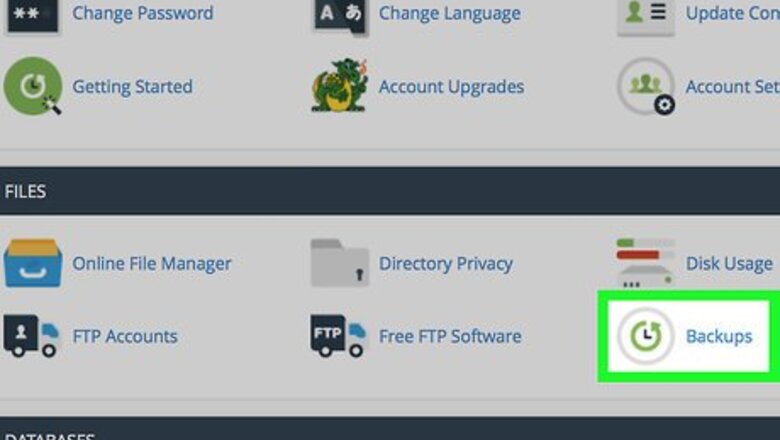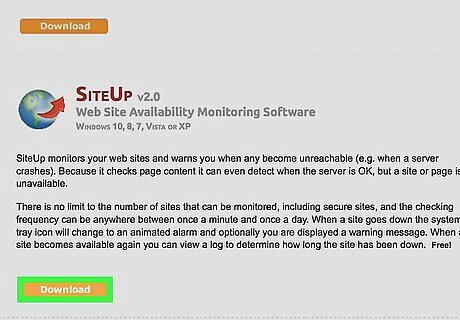
views
Running Maintenance and Troubleshooting

Back up your website. Should your site happen to crash without warning, it would be disastrous to lose all of the data and coding that you’ve worked hard to put together. Backing up your website will allow you to restore the most recent version of the site. Back up the site at least once a month, or whenever edits to the page are made. Even if the company which hosts your site regularly backs up your site, it’s still smart to back up the site yourself, too. To ensure that you don’t lose website data, you could keep a copy backed up on your computer and another copy saved to a removable disk or external hard drive.

Download a program that notifies you if your website is down. To ensure that you find out as soon as your site goes down, download a program like SiteUp. SiteUp is a piece of freeware which runs in the background on your computer. SiteUp and freeware like it will monitor your site and inform you if it a server crashes or the site becomes otherwise unreachable. If the site is down for long, you risk losing or confusing potential clients or turning away curious internet browsers. Once you’ve been informed that your site is down, you can get the site back up and running as soon as possible.

Click through your own website. Web developers and programmers can become so close to the websites they create that obvious mistakes can go unnoticed. Look at every page with a detailed eye to confirm that content displays correctly. Click through every link on the site to ensure that: All links work. All links direct the user to the correct page. All images load correctly. Images load correctly on mobile devices. The website looks good and functions when viewed on very large or very small monitors.

Test the speed of your website. Over time, the download speed of your website can fluctuate and slow down. You can use an online tool like Google Pagespeed Insights or GTMetrix to ensure that the speed is optimized and the site runs quickly. Both of these sites allow you to type in your website’s URL and will analyze its speed and performance. Keeping your site running quickly will also help the site place higher in search engine results. This, in turn, will increase the visibility of the site.
Improving and Updating Your Site

Perform monthly site-wide content checks. In the rush of creating and posting the website, it’s possible that some live content contains errors or is improperly coded. Fix any errors that you spot, including relatively minor issues: missing or incorrect punctuation, typos within copy, or spelling errors. Larger errors include: improper formatting, unreadable content, misspelling the company name, etc. If your company has a copy editor on staff, ask them to read through each of the website’s pages and let you know about any grammatical or mechanical errors.

Increase the site’s search-engine optimization. Search-engine optimization (SEO) will help ensure that your website shows up on the first page of search-engine results when users search for terms similar to those your site uses. You can increase your site’s SEO by including keywords related to your business or products in website copy. Also increase your website’s SEO by ensuring that the site is easily navigable and efficient. Make sure that no pages display a “404” error. A quick rule of thumb is that a website with around 2,500 words total will perform well in Google searches.

Add and improve web content. Depending on the nature of your website, it may contain a wide variety of types of content. Regardless, it’s important to keep content up-to-date, or users will find your website dull and useless. Over time, you can also go through and improve web content: things like page layout, navigation bars, and links to social media pages should all be apparent and user-friendly. For example, if you’re managing a commercial website which sells a product to consumers, you’ll need to update the website with details about new products, new promotions or sales, or any recalls for faulty products. If your website isn’t commercial, but provides news or blog-like opinion pieces, you’ll need to regularly update content. Add new articles or opinion posts at least weekly, so that users don’t become bored with the site.


















Comments
0 comment